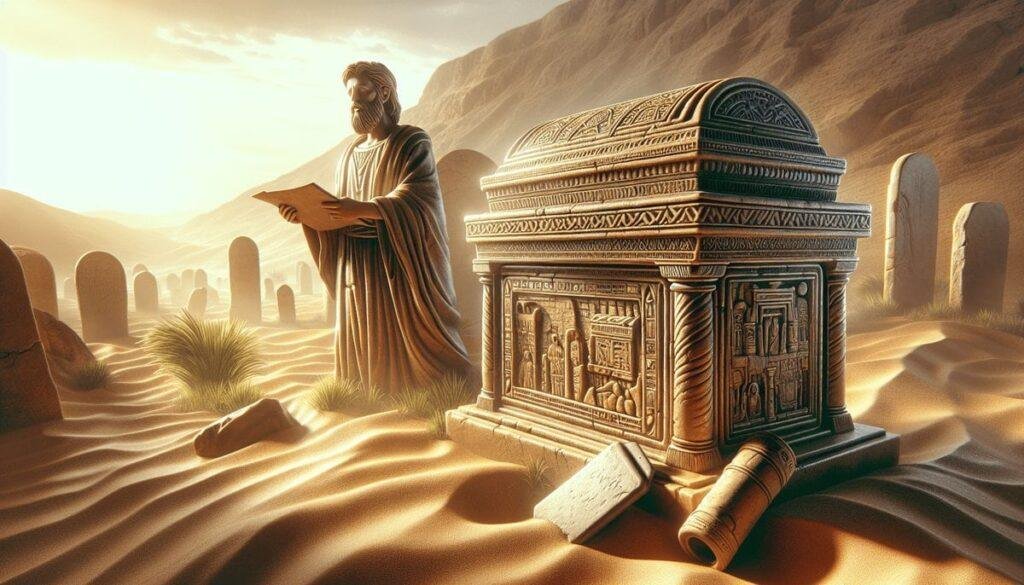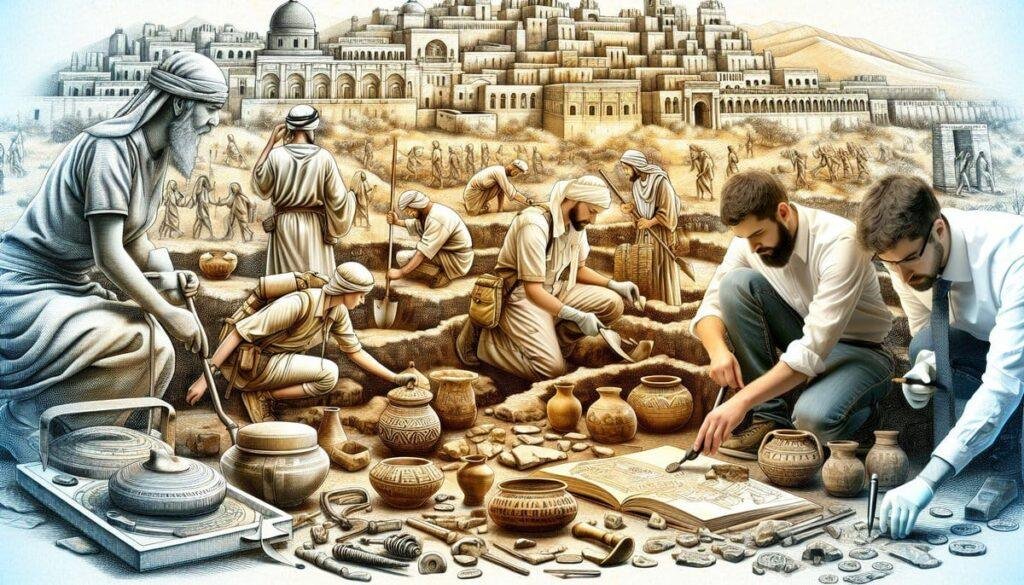What would you risk to uncover a piece of history?
The Ark of the Covenant: A Sacred Legacy
You’ve likely heard about the Ark of the Covenant. It rolls off the tongue like a secret whispered from one generation to the next, a blend of faith, intrigue, and an overwhelming sense of loss. You might even find yourself wondering why people are so captivated by this ancient artifact. The Ark is more than just a biblical relic; it represents a profound connection to the divine, a tangible link between the earthly and the sacred.
Picture it: a gilded chest, measuring about 4 feet long, 2.5 feet wide, and 2.5 feet high, made of acacia wood and covered in pure gold. It holds the tablets of the Ten Commandments, Aaron’s rod, and a pot of manna. But where is it now? Its disappearance has led many to a search that stretches across centuries, generations, and borders.
A Historical Context: Ancient Foundations
To understand why the Ark’s disappearance matters, you first need to grasp its historical context. The Ark was instrumental in several biblical narratives, including the Israelites’ exodus from Egypt and their subsequent wanderings through the desert. Imagine a group of people, trudging through sand and sun, reliant on something more significant than themselves—this was the Ark.
According to scripture, the Ark was constructed under the guidance of Moses, based on divine instructions outlined in Exodus 25. It was both a sacred object and a potent symbol of God’s presence with His people. When David brought it to Jerusalem, a city he unified under his rule, it became the centerpiece of worship. It was as if the soul of the nation had found a physical form.
The Ark in Scripture: Divinely Ordained Narratives
The biblical narrative surrounding the Ark weaves a rich tapestry of events illustrating its significance. From the miraculous crossing of the Jordan River to the Battle of Jericho, in which the Ark played a pivotal role, every episode underscores its importance as a vessel of God’s power and guidance.
- Biblical References: The Ark is mentioned in numerous passages throughout the Torah and the subsequent books of the Old Testament. Key texts include:
- Exodus 25:10-22: Detailed instructions for the Ark’s construction.
- Numbers 10:33-36: The Ark’s leading role during the Israelites’ journeys through the wilderness.
- Joshua 3:6-17: The miraculous crossing into the Promised Land.
These passages not only establish the Ark’s physical description but also highlight its deep relational significance between God and His people.

The Theological Significance: More Than a Physical Object
When you delve deeper into biblical theology, the Ark transcends its physical form to become a symbol of God’s covenant with humanity. It represents His promises and presence. In a way, it encapsulates humanity’s longing for connection to the divine.
- Covenant Theology: Understanding the Ark involves grasping the idea of covenant, which binds God and His chosen people. The Ark served as a reminder of God’s faithfulness, drawing a line through history that connects the initial covenant with Abraham to the ultimate redemption through Christ.
Consider the implications of this in modern faith. Believers often reflect on the nature of their relationship with God, inspired by the Ark’s representation of grace and commitment. The quest for its physical manifestation may simply mirror a thirst for deeper spiritual significance.
The Great Disappearance: Speculations and Theories
With the spiritual and historical importance laid out, the question beckons: where did the Ark go? Theories abound, transforming what might seem like mere conspiracy into a fascinating tapestry of history and legend.
Babylonian Conquest: The First Great Loss
When the Babylonians invaded Jerusalem in 586 BCE, the Ark seemingly vanished from historical records. The destruction of the First Temple contributed to the Ark’s mystery; it became a symbol of loss. Was it destroyed? Captured? Hidden? Scholars, archaeologists, and theologians have debated this for centuries, leading to various theories.
- Historical Accounts: Josephus, a first-century Jewish historian, claimed that the Ark was hidden before the Babylonian invasion, possibly in a cave near the Temple. Scripture, however, does not directly confirm or deny this account, leaving it shrouded in mystery and speculation.
Egypt: The Land of Secrets
Another tantalizing theory posits that the Ark was taken to Egypt. Several ancient texts hint at the idea that powerful relics traveled to protect them from conquest. Imagine the Ark as a wandering soul, seeking refuge in foreign lands, filled with the whispers of ancient power.
This idea raises questions about the role of ancient Egypt in biblical history. Was it a haven for sacred artifacts, or merely a stage for religious and cultural exchange?
Ethiopia: The Land of the Lost Ark
Perhaps the most intriguing speculation revolves around Ethiopia. The Ethiopian Orthodox Church claims to possess the Ark, housed in the Church of St. Mary of Zion in Axum. For many, this claim raises eyebrows and ignites sparkles of hope. Could the Ark be safely ensconced within the walls of a church, watched over by monks mantled in faith?
- Cultural Implications: If this claim holds any truth, it emphasizes the fluidity of cultural narratives attached to sacred objects. The Ark’s story, intertwined with Africa’s rich history, continues to resonate with many who seek connection to their ancestral past.

Replicas of the Sacred: Modern-Day Interpretations
While the original Ark may be lost to time, replicas have emerged throughout the centuries, serving as both educational tools and cultural symbols. These reproductions reflect humanity’s quest to honor what once was.
The Temple Institute’s Ark
Located in Jerusalem, The Temple Institute has taken bold steps to create replicas of many Temple artifacts, including the Ark. Their detailed work is based on biblical specifications, using materials akin to those described in scripture.
- Cultural Impact: Such replicas foster curiosity and provoke discussion regarding the implications of restoring the Temple. Can the Ark, or something resembling it, return to its rightful place?
Popular Culture: Ark in Fiction
You might be surprised to find how ingrained the Ark of the Covenant is in popular culture. Films, books, and even video games often reference the Ark, providing a modern twist on the ancient artifact. Take “Raiders of the Lost Ark,” for example; it takes viewers on an adventure through the mysteries of the past.
- Artistic Interpretations: These portrayals influence public perception of the Ark. They weave threads of excitement through history, making ancient narratives feel fresh and relevant. The allure of the Ark thrives on contemporary interpretations, ensuring it remains a part of popular consciousness.
Archeological Insight: The Search for Evidence
With the thrill of legends comes the undeniable pull of archaeological inquiry. Historians and archaeologists alike have sought physical evidence associated with the Ark’s past. Though major discoveries regarding the Ark itself haven’t been made, ongoing research into ancient Israelite sites reveals potential clues about its history.
Excavations and Discoveries
Researchers have concentrated their efforts on locating possible sites of significance in Israel and beyond. For instance, findings at Kiriath-Jearim, where the Ark was housed for twenty years before being moved to Jerusalem, have drawn attention.
- Archaeological Findings: Excavations have uncovered artifacts and religious items reminiscent of ancient worship practices, allowing scholars to speculate about the nature of worship surrounding the Ark. However, the Ark remains elusive, lingering like a ghost in historical discussions.
Modern Perspectives: The Quest for Meaning
As you ponder the Ark’s journey through history, consider its implications in today’s society. The quest for the Ark resonates with modern themes of faith, identity, and connection to the divine. While the physical Ark may be lost, its symbols continue to inspire seekers.
A Beacon of Hope
For believers, the search for the Ark often symbolizes a deeper spiritual quest. It embodies a longing for connection with the divine, for the promises that God’s presence brings. Just as generations looked toward the Ark for guidance, modern believers seek the same assurance in their lives.
Cultural Reflection
In a world increasingly focused on materialism, the story of the Ark invites you to consider what truly matters. It encourages reflection on spiritual heritage and the connections that transcend time and space.
Conclusion: The Ark’s Enduring Legacy
In wrapping up this exploration, the Ark of the Covenant stands as more than just an artifact lost in the mists of history. It represents a quest—a quest for meaning, connection, and understanding in a world perpetually searching for purpose. The legends, searches, speculations, and replicas symbolize humanity’s enduring desire to grasp the divine, to anchor itself in something timeless.
As you navigate your own journey, think of the Ark not just as a lost object but as a reflection of the sacred connections we’ve built through our history, beliefs, and aspirations. Such musings connect you to a broader narrative—one that weaves through time, culture, and the human experience, forever inviting you to reflect on what lies beyond the seen and the known.


